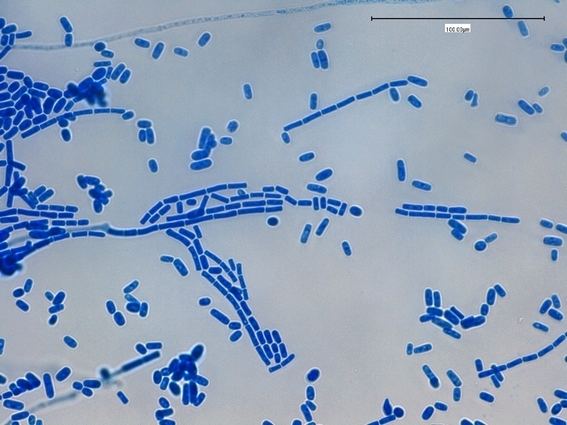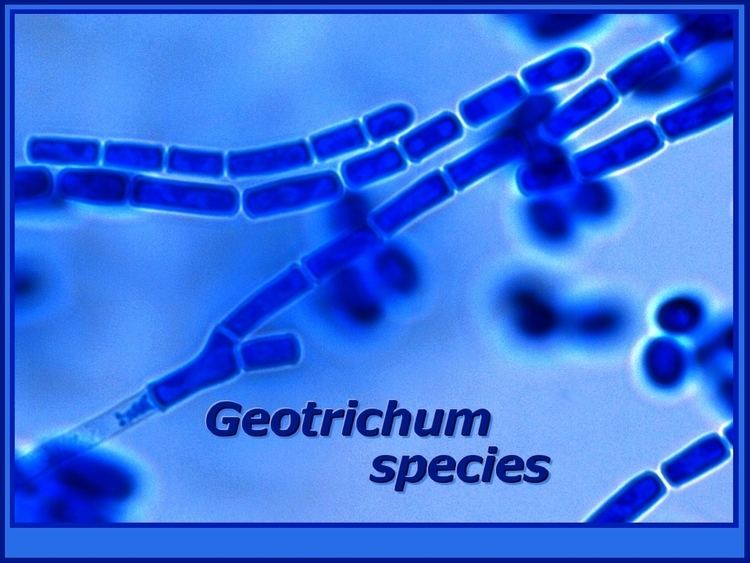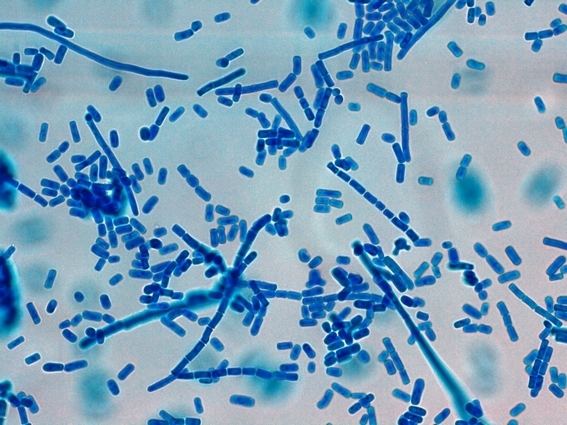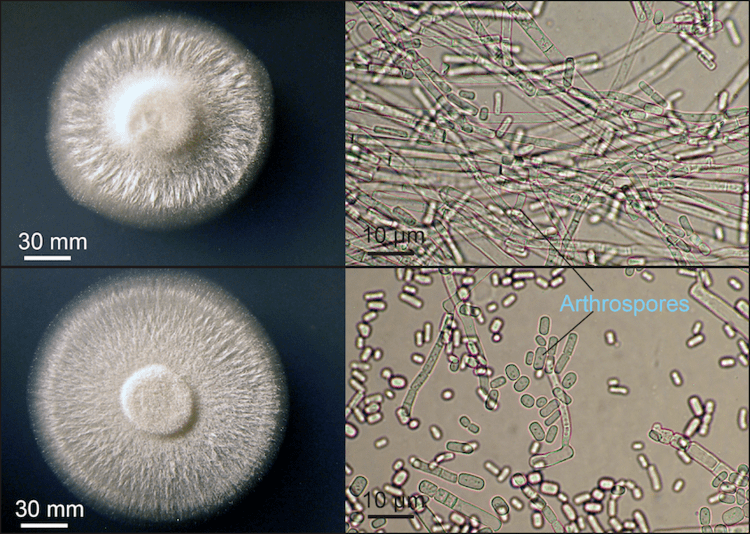Scientific name Geotrichum Rank Genus | Family Endomycetaceae Higher classification Endomycetaceae | |
 | ||
Similar | ||
Geotrichum meets collimonas
Geotrichum is a genus of Fungi found worldwide in soil, water, air, and sewage, as well as in plants, cereals, and dairy products; it is also commonly found in normal human flora and is isolated from sputum and feces. It was first described in 1809 by Johann Heinrich Friedrich Link.
Contents

The genus Geotrichum includes several species. The most clinical relevant is Saprochaeta capitata, formerly known as Geotrichum capitatum, with most cases occurring in Europe.

Saprochaete clavata, formerly known as Geotrichum clavatum, is an uncommon infection that has been associated with sporadic outbreaks. Geotrichum candidum is closely related to Saprochaeta sp., rarely isolated but may cause invasive and disseminated disease with high mortality Yeast-like and mold-like strains have been identified.

The most important risk factor for invasive fungal infection related to Geotrichum is severe immunosuppression, especially in hematological malignancies as acute leukemia, associated with profound and prolonged neutropenia.

Fungemia is very common, often with deep organ involvement (lung, liver, spleen, and central nervous system) and also skin and mucous membranes lesions. There is no optimal treatment for Geotrichum infections but based on existing data guidelines recommend amphotericin B with or without co administered flucytosine or with voriconazole showing good in vitro susceptibility.

Mortality associated with Geotrichum-related infections is high, ranging from 57% to 80%.
Increasing the knowledge on Geotrichum related invasive fungal infections may improve early diagnosis and adequate treatment of these severe infections.

History
The genus Geotrichum was described by Johann Heinrich Friedrich Link in 1809 to accommodate the species G. candidum found on decaying leaves. Since then, over 130 taxa have been described in the genus, and hundreds of synonyms have been generated. For example G. candidum was misclassified as the Oidium lactis in much early literature. Species of Geotrichum resemble the genera Trichosporon and Protendomycopsis; however, Geotrichum is of ascomycetous affiliation whereas the latter are members of the Basidiomycota. Species of Geotrichum are occasionally mistaken for fast growing members of the genus Dipodascus, which are characterized by irregularly branched, 10-14 μm wide hyphae and the production of single-spored asci. However, unlike Geotrichum, members of the genus Dipodascus lack dichotomous branching of the peripheral hyphae and their growth rates are generally less than 3 mm per day.
